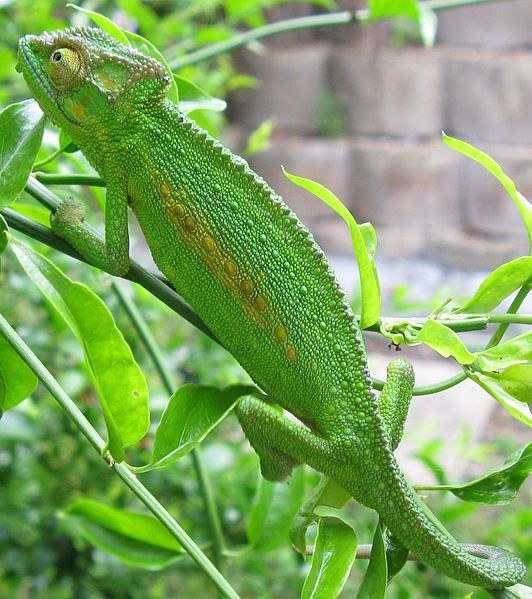chamburuksochamenga
chameleon (English) [ IPA: kəˈmiːljən ASM: কেমিলিয়ন]
Contributed by: Dr. Neelotpal Deka, LL.M. (IT & IP Law, UK) on 2007-07-23
 English: chameleon,
English: chameleon,
Assamese: কোকলোঙা,
Garo: ganjapa, gara,
Karbi: ureng,
Dimasa: dimbong,
Hindi: गिरगिट
b. Common Noun-Common: Chalcides ocellatus, gongilo, grass skink, নাইপিয়া, মইন-কিৰা...
chameleon (English) [ IPA: kəˈmiːljən ASM: কেমিলিয়ন]
Contributed by: Dr. Neelotpal Deka, LL.M. (IT & IP Law, UK) on 2007-07-23
1. Reptile(Common Noun-Common &/or Masculine) The term 'chameleon' is a combination of two Greek words, 'Chamai', meaning 'on the ground/earth' and Leon, meaning 'lion'. Thus, 'chameleon' means 'earth lion'. The chameleons are distinctive and highly specialized clade of lizards. They are distinguished by their parrot-like feet, their stereoscopic eyes, their very long and rapidly extrudable tongues, their swaying gait, and the possession by many of a prehensile tail, crests/horns on heads. Most of the chameleons have the ability to change colour. Approximately 160 species of the chameleon range from Africa, Madagascar, Spain and Portugal, across south Asia, to Sri Lanka, have been introduced to Hawaii and California, and are found in warm habitats that vary from rain forest to desert conditions. There is only one species of chameleons found in the Indian subcontinent, scientifically known as Chamaeleo zeylanicus. One of the most interesting features of an Indian Chameleon is its extremely long tongue, which at times may exceed its body length also. The breeding season of the chameleon lizard falls around the month of October. Ten to thirty eggs are laid at a time and the gestation period is 3 to 6 weeks. Chameleon lizard survives on a diet of locusts, mantids, crickets, and other insects.

Assamese: কোকলোঙা,
Garo: ganjapa, gara,
Karbi: ureng,
Dimasa: dimbong,
Hindi: गिरगिट
Related Idea:
a. Common Noun-Common: bloodsucker, Calotes versicolor, garden lizard, oriental garden lizard, গৰীয়াখোদাই...b. Common Noun-Common: Chalcides ocellatus, gongilo, grass skink, নাইপিয়া, মইন-কিৰা...
